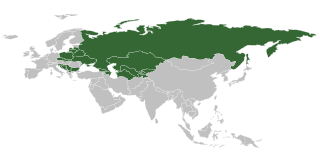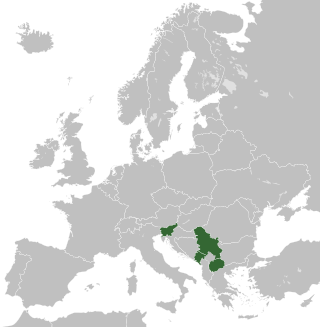Major is a senior military officer rank used in many countries. When used unhyphenated and in conjunction with no other indicators, major is one rank above captain in armies and air forces, and one rank below lieutenant colonel. It is considered the most junior of the senior officer ranks.

Polkovnik is a military rank used mostly in Slavic-speaking countries which corresponds to a colonel in English-speaking states, coronel in Spanish and Portuguese-speaking states and oberst in several German-speaking and Scandinavian countries. It was originally a rank in the Polish–Lithuanian Commonwealth and the Russian Empire. However, in Cossack Hetmanate and Sloboda Ukraine, polkovnyk was an administrative rank similar to a governor. Usually this word is translated as colonel, however the transliteration is also in common usage, for the sake of the historical and social context. Polkovnik began as a commander of a distinct group of troops (polk), arranged for battle.
Commissioned officers' rank comparison chart of all land forces of NATO member states.
The following are the ranks and insignia of NATO Air Forces Enlisted personnel for each member nation.
The following table lists the ranks and insignia of officers in NATO air forces.

Podpolkovnik is a military rank in Slavic and nearby countries which corresponds to the lieutenant colonel in the English-speaking states and military.

Podporuchik is the most junior officer in some Slavic armed forces, and is placed below the rank of lieutenant, typically corresponding to rank of second lieutenant in English-speaking countries.

Kapitan is used manifold as rank, grade, or rank designation in the Army, Air Force or Navy of numerous countries and armed forces. In member countries of NATO-alliance Kapitan is a commissioned officer rank, rated OF-2 in line to the NATO officers rank system. The almost equivalent OF-2 officer, e.g. in the US Army, is the Captain rank.
Corvette lieutenant is a rank in some navies, especially those of Spain and Latin America, roughly equivalent to a Royal Navy acting sub-lieutenant or a US Navy ensign.
Frigate lieutenant is a naval rank in the naval forces of several countries.
Senior lieutenant is a military grade between a lieutenant and a captain, often used by countries from the former Eastern Bloc. It is comparable to first lieutenant.

Lieutenant colonel general is a general officer rank in a number of armed forces in the countries of the Balkans. The rank can be traced back the ranks used by the Yugoslav People's Army, and continues to be used in a number of former Yugoslav countries following the breakup of Yugoslavia.
A Senior sergeant is a rank of non-commissioned officer used in the armed forces of many nations. It is usually placed above sergeant.
Major general is a military rank used in many countries. It is derived from the older rank of sergeant major general.
Colonel general is a military rank used in some armies. The rank originates from the Old European System and it is particularly associated with Germany, where historically general officer ranks were one grade lower than in the Commonwealth and the United States, and Generaloberst was a rank above full General, but below Generalfeldmarschall. The rank of colonel general also exists in the armed forces organized along the lines of the Soviet model, where it is comparable to that of a lieutenant general.
Rank comparison chart of all armies and land forces of European states.
Rank comparison chart of all air forces of European states.
Rank comparison chart of air forces non-commissioned officers and other personnel of European states.
Rank comparison chart of all navies of European states. Some European countries do not have naval forces, either because they are landlocked, such as Austria, Belarus, the Czech Republic, Moldova, Luxembourg, Bosnia & Herzegovina, Kosovo, Slovakia, San Marino and the Vatican, or naval duties provided by another state such as Monaco.
Rank comparison chart of all air forces of the European Union member states.











